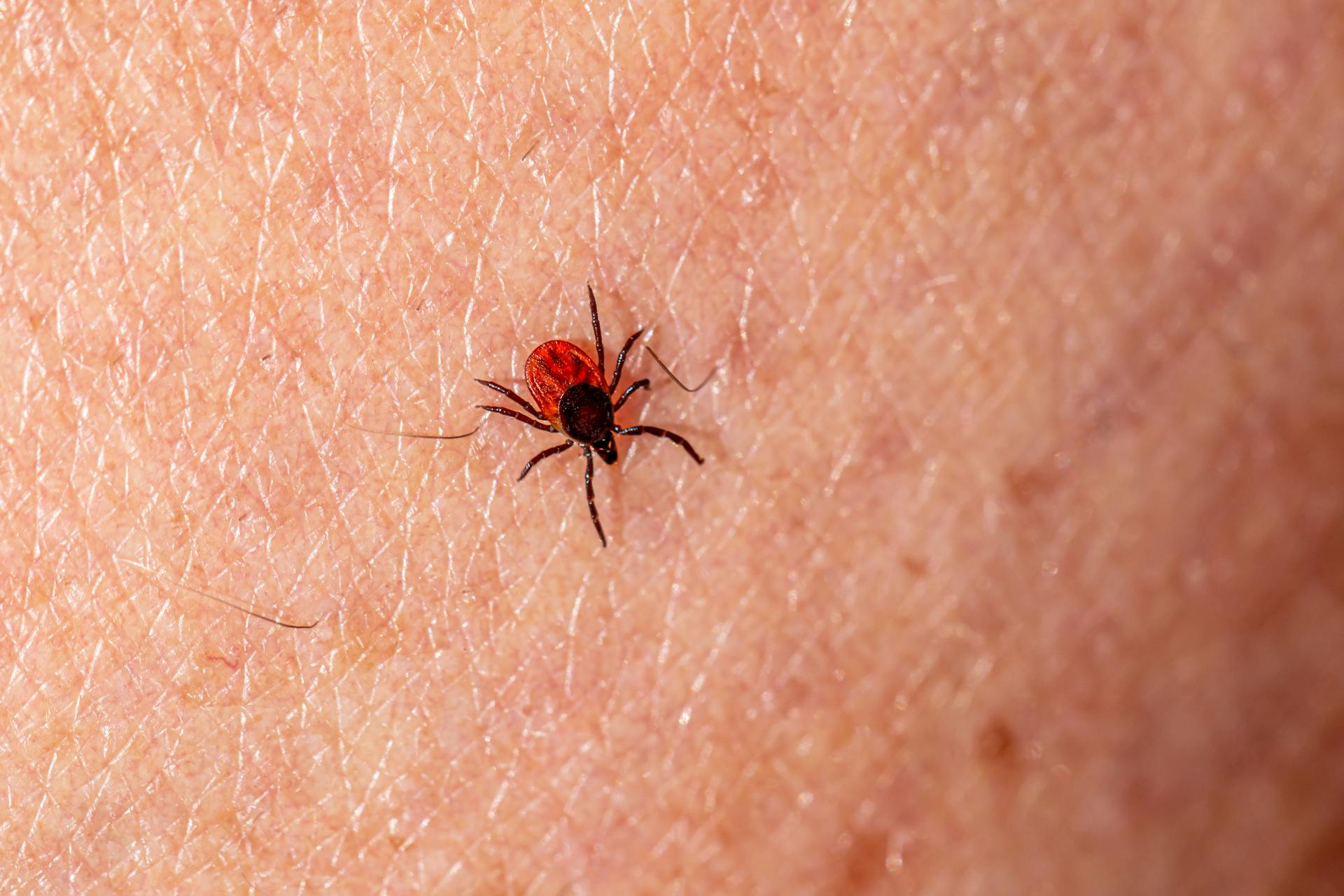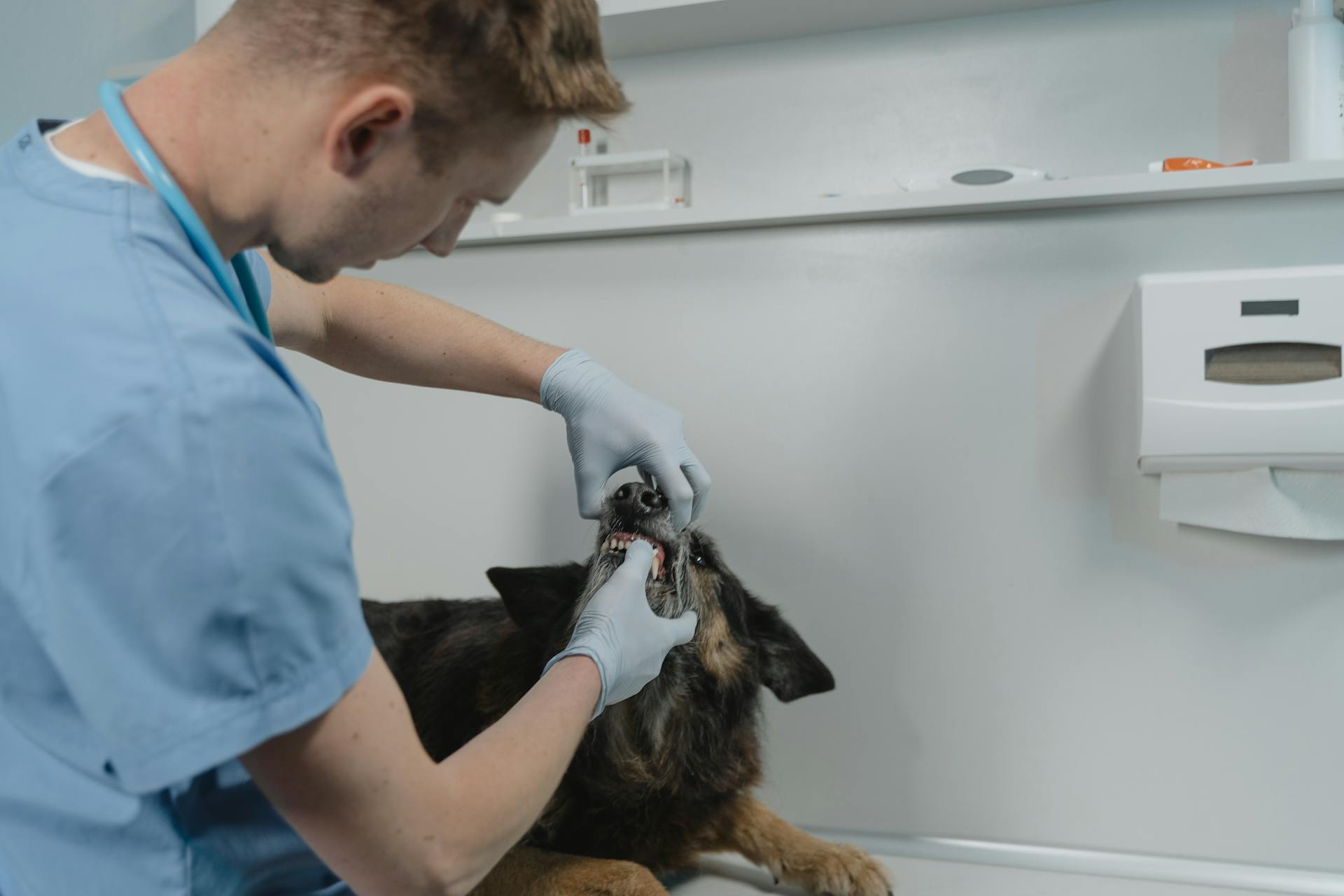
Cheyletiella yasguri parasites can infest cats, dogs, and rabbits, causing discomfort and skin issues.
These tiny mites are highly contagious and can be spread through direct contact with an infected animal or by sharing food and water bowls.
They thrive in warm, humid environments, making them a common problem in homes with poor ventilation.
Infested pets often exhibit symptoms such as intense itching, hair loss, and skin redness.
What is Cheyletiellosis?
Cheyletiellosis is a mild dermatitis caused by mites of the genus Cheyletiella. It's also known as walking dandruff due to skin scales being carried by the mites.
This condition is highly contagious and can be spread through direct contact with an affected animal. It's essential to take precautions when interacting with pets that may be infected.
Cheyletiellosis is seen more commonly in areas where fleas are less prevalent. This is because the decreased use of flea products that are also effective for treating Cheyletiella mites allows the mites to thrive.
Here are some key facts about Cheyletiellosis:
- Caused by mites of the genus Cheyletiella
- Also known as walking dandruff
- Highly contagious
- Spread through direct contact with an affected animal
- More common in areas with low flea prevalence
Causes and Transmission
Cheyletiella yasguri is a type of nonburrowing mite that affects dogs. They have a worldwide distribution.
The mites live in the outer layer of the epidermis of their host animal and feed on surface debris and tissue fluids. This can lead to a subtle dermatitis in dogs, often referred to as walking dandruff.
A female mite and possibly her eggs can live up to 10 days off a host, making environmental decontamination crucial in pest control. This is why it's essential to thoroughly clean and disinfect areas where your dog has been.
Cheyletiella yasguri completes an entire 35-day life cycle on a single animal host.
Consider reading: How Long Does a Flea Live on a Dog
Diagnosis and Treatment
Diagnosis is by finding the mites or eggs microscopically in a skin scraping, combing, or on acetate tape applied to the skin.
You can confirm a diagnosis with a simple skin scraping or by using acetate tape to collect mites or eggs from the affected area. This method is quite effective in detecting the presence of Cheyletiella yasguri.
Suggestion: What Do Flea Eggs Look like on a Dog
Treatment typically involves weekly use of a topical pesticide, often an antiflea product, which works well for cats, especially with Fipronil. Cats may also be treated with a lime sulfur insecticide dip or a shampoo with non-pyrethrin insecticide for two weeks beyond the conclusion of symptoms.
Other pets in the same household should also be treated, and the house or kennel must be treated with an environmental flea spray to prevent re-infestation.
Broaden your view: Serval Cats
Pathogenesis
The pathogenesis of this condition is quite fascinating. It's an obligate non-burrowing mite that lives on the keratin layer of the epidermis, particularly on the dorsal surface of the body.
This mite creates pseudotunnels with scales and debris on the skin surface, which can be a sign of its presence. It's like a tiny little architect, building its own little tunnels and pathways on our skin!
The mite pierces the skin with its needle-like mouth parts and feeds on tissue fluids. This can cause a range of symptoms, including skin irritation and discomfort.
The mite's feeding habits also lead to the creation of gray-white flaky, sometimes oily, scaling with a powdery appearance. This is a classic sign of the condition, and it's often a major concern for those affected.
Diagnosis

Diagnosis is a crucial step in treating any condition, and for scabies, it's relatively straightforward. Diagnosis is by finding the mites or eggs microscopically in a skin scraping, combing, or on acetate tape applied to the skin.
A healthcare professional will typically perform a skin scraping or use acetate tape to collect a sample. This sample is then examined under a microscope to confirm the presence of scabies mites or eggs.
The type of sample collected will depend on the location and severity of the scabies infestation.
Treatment
Treatment is a crucial step in addressing cheyletiellosis in animals. The most common treatment involves using a topical pesticide, often an antiflea product, on a weekly basis.
For cats, fipronil works particularly well. Cats can also be treated with a lime sulfur insecticide dip or a shampoo with non-pyrethrin insecticide for two weeks after symptoms subside.
In cases where treatment is ineffective, ivermectin is used. Selamectin is another recommended treatment option.
Other pets in the household should also be treated, and the environment must be disinfected with an environmental flea spray.
Recommended read: Lick Granuloma Treatment in Dogs
Frequently Asked Questions
What kills Cheyletiella mites?
For effective treatment of Cheyletiella mites, your veterinarian may recommend alternative medications such as selamectin, milbemycin, or ivermectin. These treatments are often more effective than routine flea sprays and powders.
Sources
- https://en.wikipedia.org/wiki/Cheyletiella
- https://en.wikipedia.org/wiki/Cheyletiella_yasguri
- https://www.mdedge.com/dermatology/article/137002/infectious-diseases/whats-eating-you-cheyletiella-mites
- https://www.vetlexicon.com/lapis/dermatology/articles/cheyletiella-parasitovorax/
- https://academic.oup.com/jme/article-abstract/13/3/315/2219281
Featured Images: pexels.com

